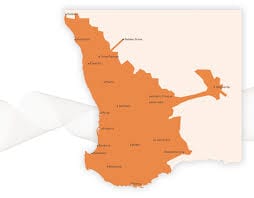The chances of the West Australian electricity grid becoming the first to fall victim to the so-called “death spiral” for utilities appears to have increased after it was revealed this week that the gap between the cost to generate, transmit and sell electricity and the charge to consumer has widened.
The “death spiral” is a term coined by utilities in an attempt to defend their business models against the rise of the “pro-sumer”, customers who are no longer just buying energy but who are sourcing cheaper electricity from their own generation, usually rooftop solar, and cutting demand from the grid.
 The WA grid, however, has helped create its own death spiral because it has never recovered the cost of its largely fossil-fuel fired electricity from the consumer. The costs keep rising, and now it has emerged that electricity demand has fallen so low that the major utilities may be forced to pay for fossil-fuel generation they will never use.
The WA grid, however, has helped create its own death spiral because it has never recovered the cost of its largely fossil-fuel fired electricity from the consumer. The costs keep rising, and now it has emerged that electricity demand has fallen so low that the major utilities may be forced to pay for fossil-fuel generation they will never use.
It is hard to imagine a more unsustainable situation, and it is quite possible that the WA grid is the most at risk in the developed world from the emergence of cheaper solar and storage solutions.
Synergy, the WA Government-owned electricity and gas retailer that has just been merged with the government owned generator Verve Energy, revealed this week that the gap between consumer bills and the cost of delivery through the grid had blown out to nearly $500 million in the 2013 fiscal year.
This is despite the fact that residential power prices have risen 70 per cent since the Barnett government came to power in 2008. Synergy told the Upper House financial estimates committee that consumer bills would have needed to increase by another one third in 2012-13 to match the cost of production.
Synergy CFO Karl Matacz told the committee that solar panel installations, which have grown from zero to 130,000 in just five years, continue to grow at a rate of more than 2,000 a month, despite the removal of feed in tariffs. Indeed, the company’s annual report released late last year put the rate of solar installations at 2,600 a month, or more than 31,000 a year.
What this shows is that rooftop solar PV is becoming a “no-brainer” for households in the state. The question is whether it becomes a “no-brainer” for the utilities, and the government owners, and whether they can see how they can adjust their business models to suit.
The new CEO of Synergy, Jason Waters, was asked by committee chairman Ken Travers to what extent the merged utility was vulnerable to a “death spiral” scenario.
“I don’t have an answer to that question until we get the ability to properly consolidate this business,” The West Australian newspaper quoted Waters as saying. Waters noted that the merger had only been completed at the end of 2013. He was previously head of Verve.
“Before I make any comments about death spirals or those kind of terms that you’ve bandied around, we’ve got to unpack this business and get a handle on our own cost position and to work out what efficiencies we can bring to bear in light of the merger structure.”
The former CEO Trevor James noted in the most recent annual report that the fall in consumption and the (related) uptake of rooftop solar has created a “step change” in the energy industry.
More than one in ten households in WA had installed rooftop solar, and – coincidentally – the average household electricity consumption has fallen 10 per cent in just the last two years to 5,531kWh.
“It is a clear signal that we need to adjust our business model to account for lower energy sales,” James wrote at the time. “It’s a very new but very real impact to our business and has highlighted our need to be flexible and contemporary in our response to market changes.
“Customers are doing more than simply buying energy; they are seeking our advice and practical guidance on managing their energy consumption and how to reduce their costs of production.”
As the company’s chairman Michael Smith warned in the annual report, the profliferation of solar and th smarter use of energy by its customers mans that th utility is now facing a situation it could have barely believed. “We have experienced what we previously considered hard to imagine: an actual fall in sales,” he wrote.
So much so, Smith added, that the company was now close to its “take or pay obligations on the supply side..” What that means is that if consumption falls much further, the utility will be forced to pay for generation that it does not use.
If the WA government was to lift the consumer price to reflect the actual cost of generation and delivery, this would put the retail price at close to 40c/kWh. That compares to around 15c/kWh for rooftop solar PV. The difference provides an awful lot of room for alternatives such as storage, and even micro-grids to fill the gap.
It is clear what the end-game is, what is not clear – for Synergy and other utilities around the world (see our Hawaii story for another illustration) is how to get there.
It is for that reason that the decisions made in WA will be watched with great interest.








